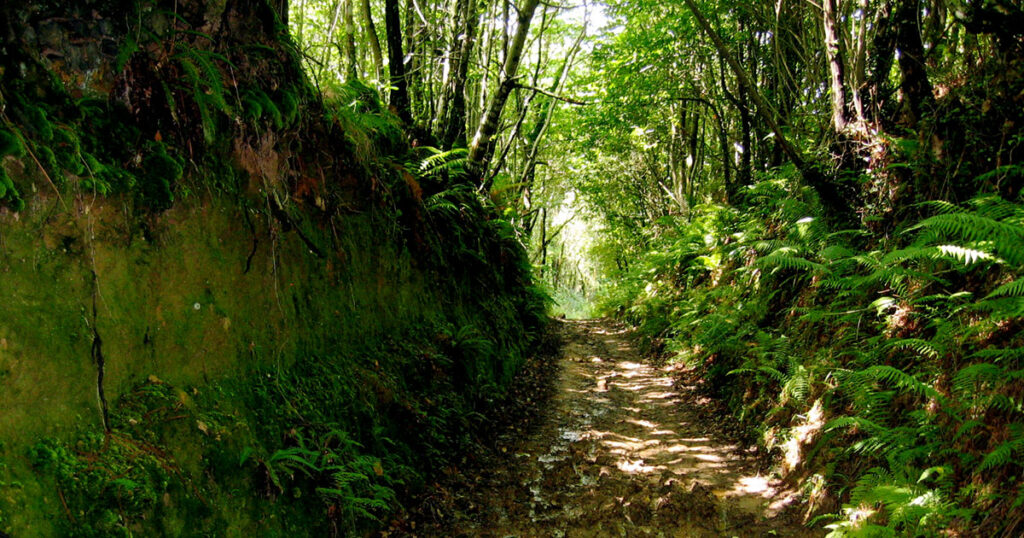
“There are some icky parts,” wrote my friend from Michigan in early July, where, at the end of another week on her WAA—her Walk Across America—she was scouting the territory she would be tackling later in the month. Her project is to walk from Oregon to Maine, in week-long stints throughout the walkable months. She’s been at it for six years and recently hit the 2,500-mile mark on her eight-year, 3,500-mile trek. In her blog about her project, she noted that from that point on, she would be counting down the miles to the end rather than counting up the accumulated miles and months. Two years and 1,000 miles remained. And some icky parts. Never daunted, she wrote that she was still studying the map to find a way around those upcoming parts. “The good thing about Michigan is that there are lots of roads to choose from. The bad thing about Michigan is that there are lots of roads to choose from.”
For my friend, icky means roads with heavy traffic, semis, or no shoulders. Or all of these. Made ickier still by a long drive from a motel to the starting point to face the icky conditions. Friends from Colorado who visited me here in Spain around the same time are also doing a walking project. Theirs is very user-friendly: they walk, walking anywhere, anytime. They took me with them on a couple stretches of the Camino de Santiago, where icky means mainly badly marked routes, or routes along highways rather than on trails. The Camino passes through La Pola, where I live, and on to Oviedo, the capital of the province. We discovered where the path enters town, where it exits, and the beautifully restored old building that is the hostel for caminantes, pilgrims. And then we walked the route to the next town, El Berrón, about five kilometers distant, had a soft drink at a bar, and then walked back. Nothing icky about the route, just challenging as it zig-zagged and jig-jogged. In the process, I learned what was already second nature to my friends: to look for the yellow arrows showing the way. Every time I spotted a yellow arrow on a dumpster, a telephone pole, or a wall was a thrill. “Look! Another!” was my cry. They were appearing all over the place. But the bigger thrill was to spot the scallop shells that are the traditional symbol of the Camino. Some are bronze shells affixed to a rock or a wall or even imbedded in the pavement, and others are ceramic. Why a shell, though?
Perhaps, I read, because shells could double as bowls. Perhaps because they worked well as scoops at monasteries where pilgrims were given a helping of food to see them on their way. Or because the ocean awaits the pilgrims at the end of the trek to the end of the world? The good thing about conjectures is you can make them endlessly. The bad thing about conjectures is you can make them endlessly.
My friends from Colorado are home, walking dusty trails in the La Plata mountains. They say they’ll be back next year, or the following. My WAA friend is home in Phoenix, between stints on her trek. She has now finished two more weeks of walking and is soon to start another, and her goal is getting closer. That’s the good thing. The bad thing is her goal is getting closer.
As for the Camino de Santiago, the good thing when it passes through Asturias is how well the trail is marked, how abundant are the arrows and the shells. The bad thing is how soon you get used to a good thing, how soon you hardly see the bright yellow arrows where late they gleamed, an omen, full of promise and glad tidings of the coming years, the months, the days, the hours.

